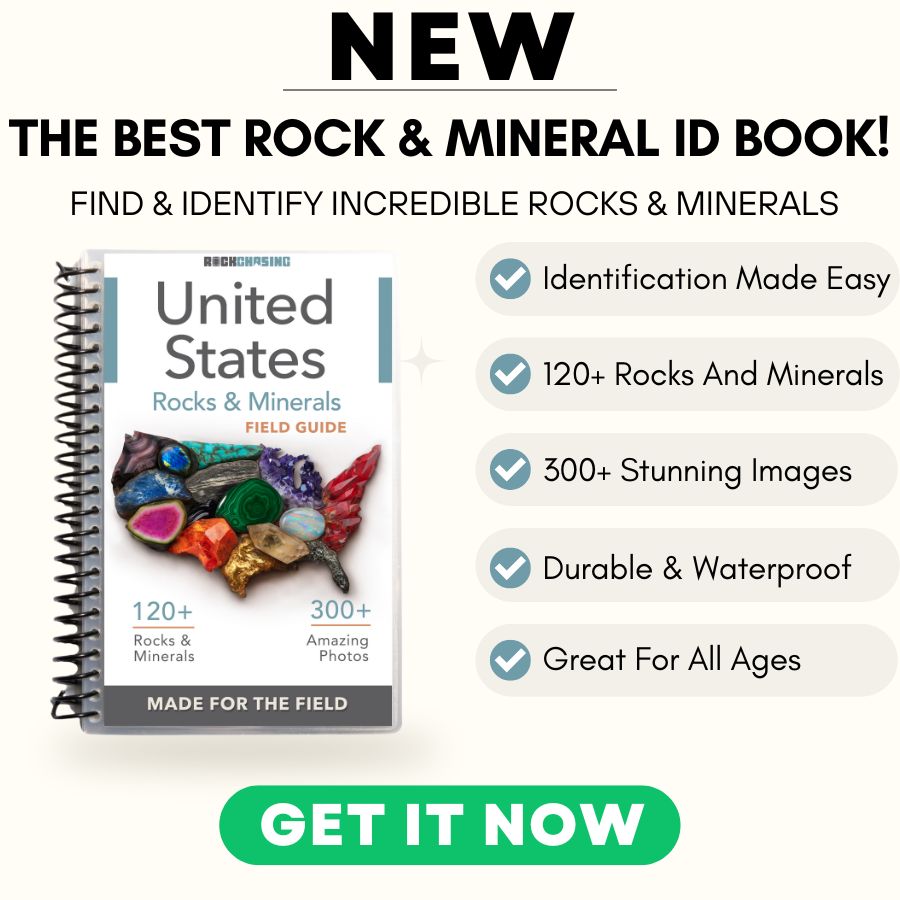Golden glints of pyrite hide in Pennsylvania’s rugged hills and ancient rock beds. This “fool’s gold” has been found in everything from coal mines to quiet creek beds, waiting to surprise the sharp-eyed rockhound.
Some of the best specimens have come from Cornwall, French Creek, and the coal regions of the state, where pyrite forms in fascinating cubes and clusters.
But many rockhounds leave empty-handed because they search in the wrong places. Pyrite isn’t scattered just anywhere. It forms in specific rock formations and mining areas. Without the right spots, hours of searching can lead to nothing.
That’s why we’ve done the hard work for you. This guide lists the top places in Pennsylvania where you can actually find pyrite, saving you time and effort. Let’s get started!
How Pyrite Forms Here
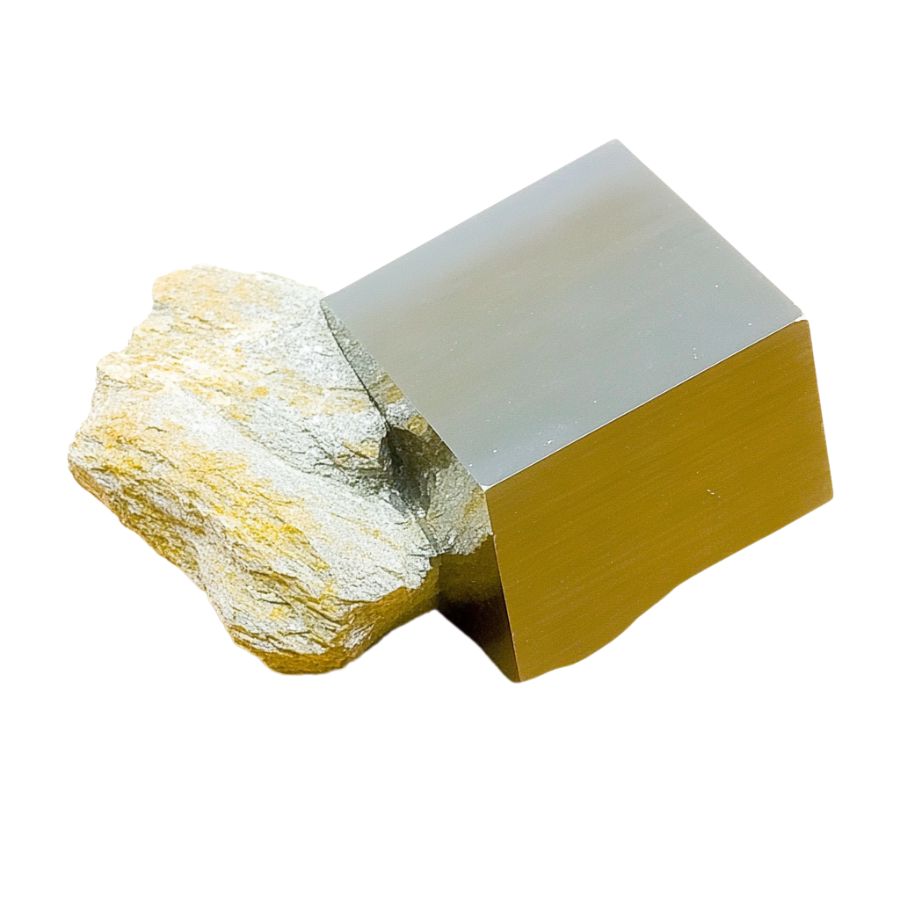
Pyrite forms when iron and sulfur combine in oxygen-poor environments, like deep in ancient seas or swamps.
The magic happens when iron-rich water meets sulfur-producing bacteria – these tiny organisms actually help create the perfect conditions for pyrite to grow!
As the bacteria break down organic matter, they release sulfur, which quickly bonds with the iron. Over time, these elements crystallize into pyrite’s distinctive cubic shapes at fairly low temperatures.
Sometimes, it forms slowly, replacing dead plants or sea creatures bit by bit, preserving their shapes as perfect golden fossils. The more pressure and heat, the bigger and more perfect the crystals become.
Types of Pyrite
Pyrite comes in several distinct forms and shapes, each with its own unique characteristics. Knowing these different varieties will help you identify what you’ve found.
Cubic Pyrite
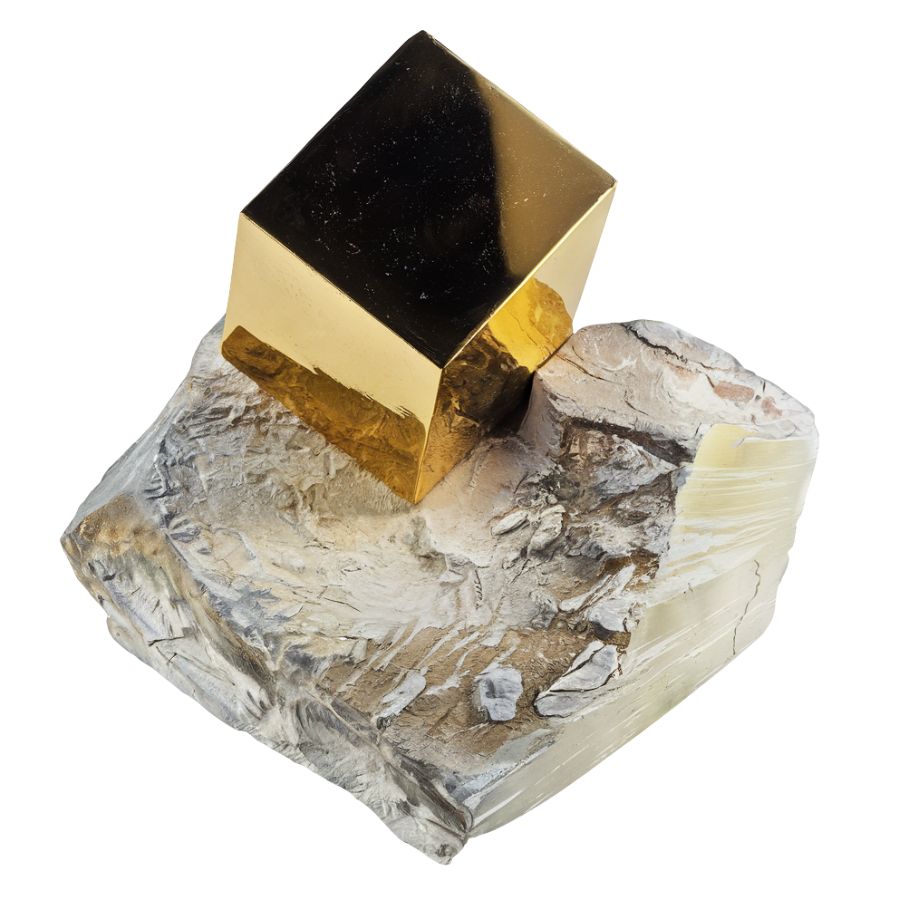
Cubic Pyrite showcases perfect cube-shaped crystals with sharp, well-defined edges and corners. While the classic form is golden, Cubic Pyrite can also appear in shades of brown or green.
What’s fascinating about Cubic Pyrite is how the crystals often cluster together, creating stunning geometric patterns. Sometimes, smaller cubes grow on larger ones, forming complex arrangements that collectors particularly value.
These specimens often develop alongside other minerals, which can create striking contrast effects.
Some pieces display interesting growth patterns where cubes appear to be stacked or intergrown with each other, creating unique architectural-like formations that make each specimen special.
Cathedral Pyrite
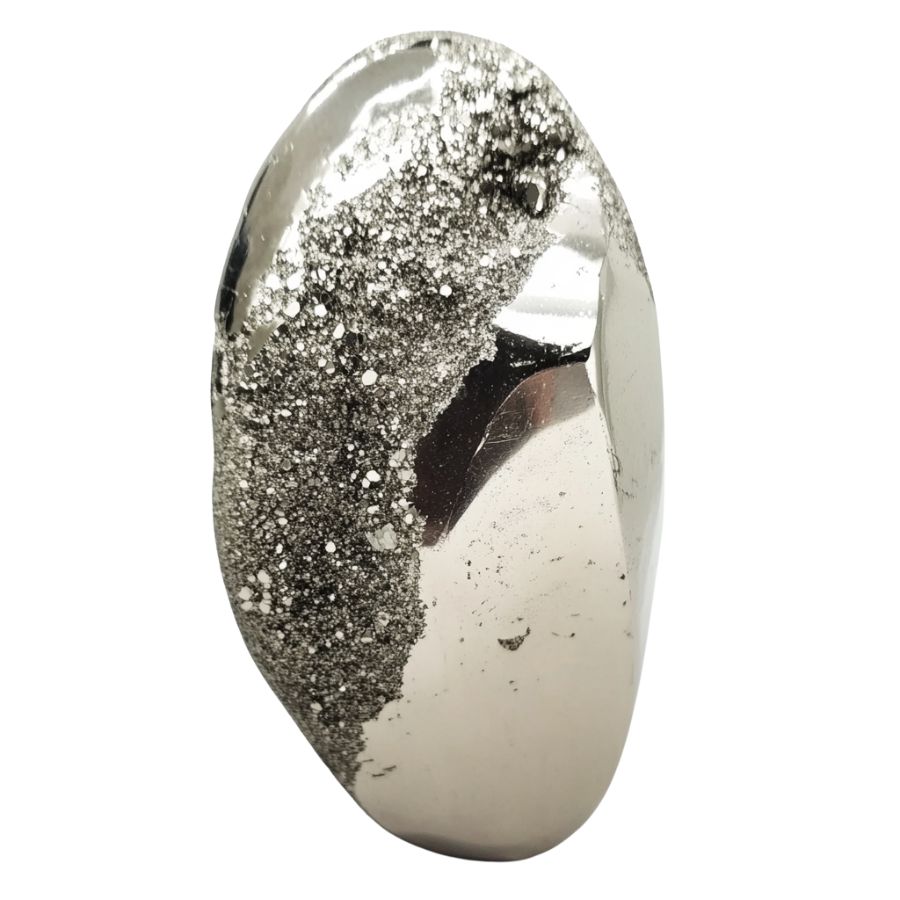
Cathedral Pyrite displays intricate surface patterns that look like delicate etchings or gothic window designs. The surface typically shows a bright, metallic luster that enhances these unique patterns.
It exhibits a combination of cubic and modified dodecahedral forms, which contribute to its unique appearance.
The crystal’s surface features result from natural etching processes during formation. This creates deeper grooves and raised areas that form symmetrical patterns.
Most specimens show variations in the depth and complexity of their etchings. Some areas might have fine, detailed patterns while others show broader, more pronounced features.
Pyrite Sun

Pyrite Sun forms in flat, disc-shaped specimens with radiating patterns that spread from the center outward. These pieces look like metallic sunbursts, with lines extending in all directions.
The radiating pattern is actually made up of countless tiny crystals arranged in a circular formation. This arrangement creates a natural symmetry that makes each piece look like a golden medallion or ancient sun symbol.
These specimens sometimes develop with interesting surface textures. Some pieces show subtle ridges along the radiating lines, while others might have a slightly bumpy texture.
The flat shape of the Pyrite Sun makes it distinctly different from other pyrite formations.
Pyritohedral Pyrite
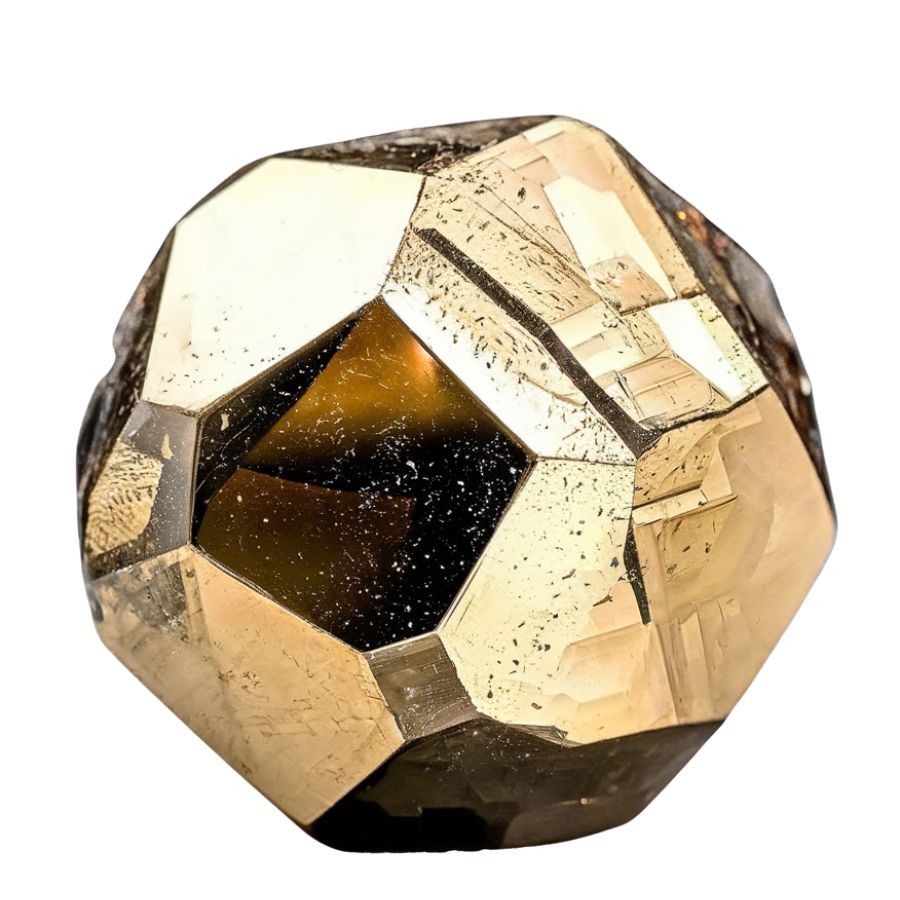
Pyritohedral Pyrite forms in unique twelve-sided shapes called pentagonal dodecahedra. Each face is a perfect pentagon. The crystals show the same bright, metallic golden color typical of pyrite, but in this distinctive shape.
Large single crystals of Pyritohedral Pyrite are particularly impressive. They can form either as individual crystals or in groups, sometimes creating interesting clusters where multiple dodecahedral shapes grow together.
One of the unique aspects of pyritohedral pyrite is its crystallography, which shows striated surfaces conforming to its pyritohedral symmetry.
Additionally, pyrite can form complex intergrowths known as framboids, which resemble raspberry-like clusters, adding to its visual appeal.
Rainbow Pyrite
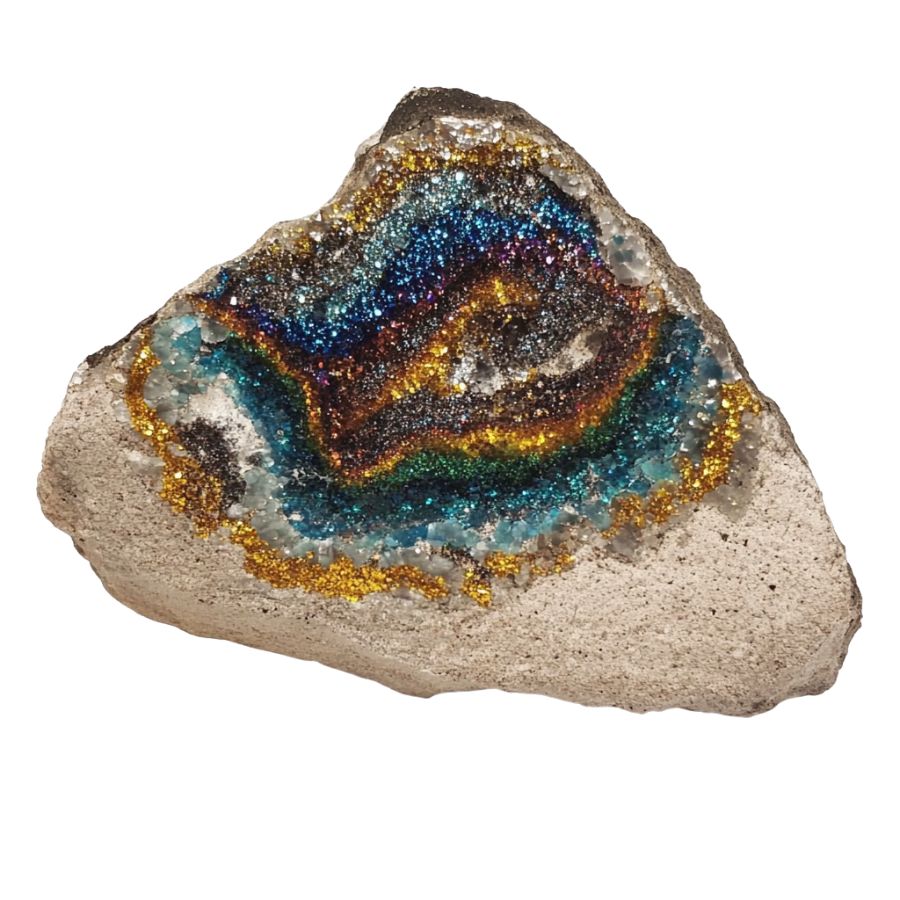
Rainbow Pyrite displays stunning iridescent colors that shimmer across its surface. These colors range from bright blues and greens to purples and pinks, creating a peacock-like effect. The colors change and shift as you move the stone, making each viewing angle unique.
The iridescent effect comes from a thin layer of oxidation on the surface. The base crystal usually maintains its metallic shine underneath these colorful patterns.
The intensity of colors varies between specimens, with some showing bold, vivid hues while others display more subtle tints.
The variability in color and pattern also adds to its allure. Additionally, it is considered a type of druzy, which refers to a layer of tiny crystals coating another rock, further enhancing its desirability among rockhounders.
Navajún Pyrite
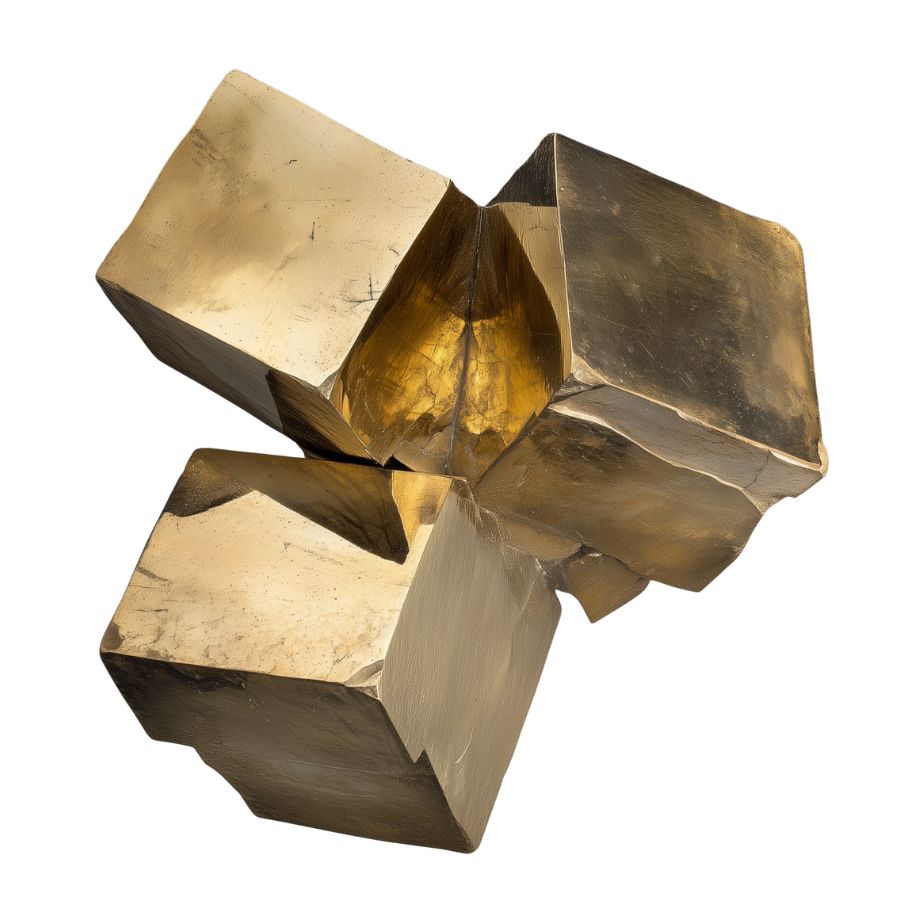
Navajún Pyrite forms perfect, sharp-edged cubes that seem almost man-made in their precision. These cubes have mirror-like surfaces. Their edges are remarkably crisp and well-defined.
The cubes can range from tiny specimens to impressive large crystals several inches across.
The conditions in Navajún have been optimal for millions of years, resulting in some of the largest and most intricate pyrite clusters found globally. The region’s geology allows for a high density of pyrite, with estimates reaching up to 100 kg per cubic meter.
A unique feature is the thin, soft coating that naturally preserves these crystals. This coating helps protect the sharp edges and brilliant surfaces from damage. When carefully removed, it reveals the pristine crystal faces underneath.
Octahedral Pyrite
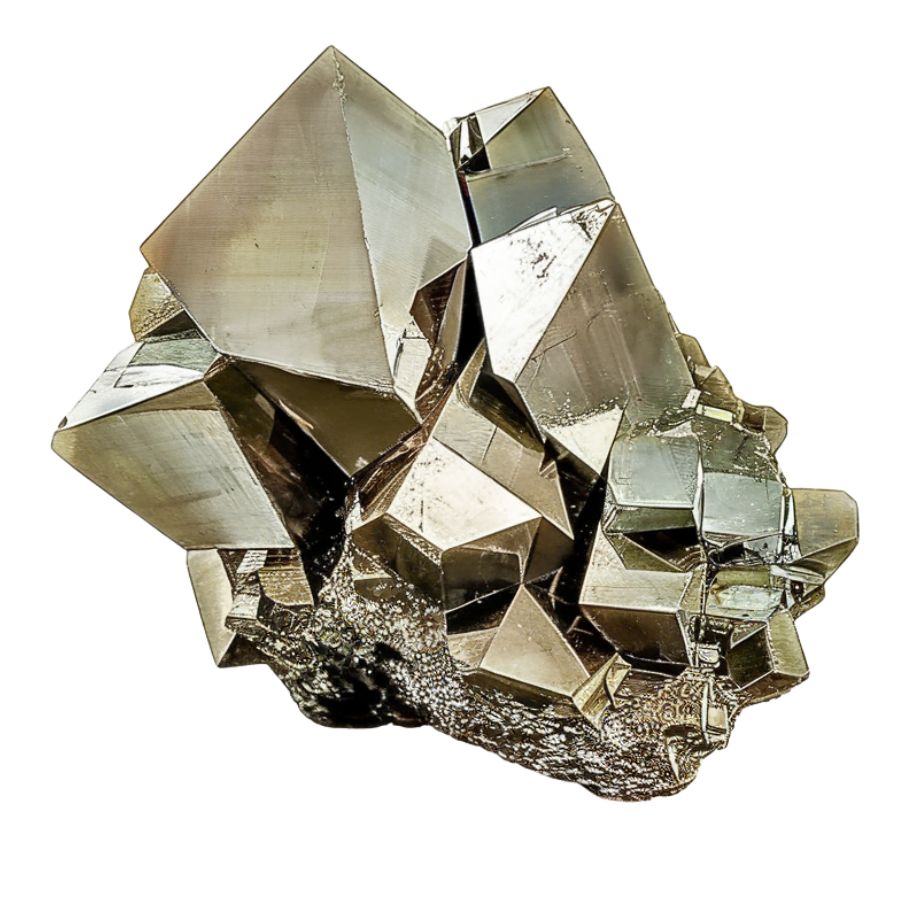
Octahedral pyrite crystals are characterized by their eight triangular faces, which belong to the {111} family of crystal facets. This octahedral form is less common than the cubic shape but is still prevalent in nature.
The faces of these crystals are typically smooth and free from the striations commonly seen on cubic pyrite.
They show a bright, metallic golden color that’s particularly striking when light hits the triangular surfaces. Some crystals develop interesting modifications where additional small faces appear at the edges or corners.
The formation of these octahedral crystals depends on specific growth conditions. Sometimes they combine with other crystal forms, creating more complex shapes that show both octahedral and cubic faces on the same specimen.
Striated Pyrite
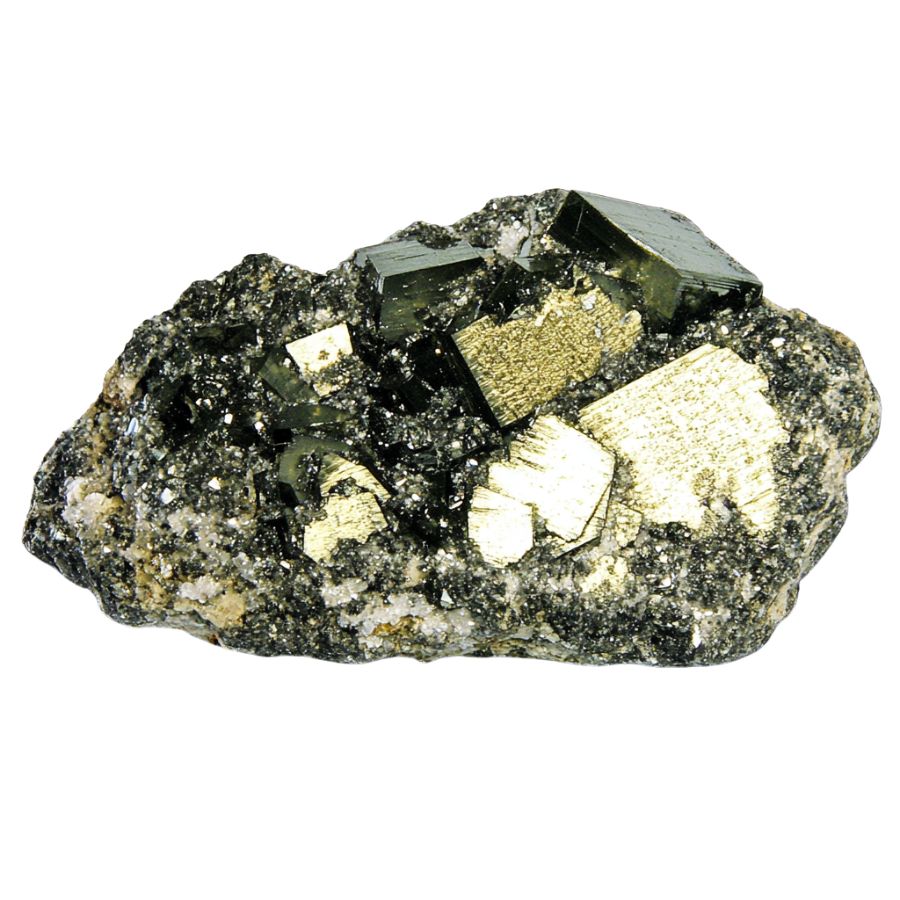
Striated Pyrite features distinctive parallel lines etched across its crystal faces. The lines can be fine and delicate or more pronounced, creating various surface patterns.
It typically forms in well-defined shapes, including cubic, octahedral, and pyritohedral forms.
The striations often run in specific directions on each crystal face. This creates an organized appearance, where the lines on adjacent faces meet at specific angles. The overall effect makes the crystal surface look like it’s been carefully engraved.
Some specimens show multiple sets of striations that cross each other, creating grid-like patterns. The depth and spacing of these lines vary between specimens. The striated surface maintains the crystal’s metallic golden color while adding visual complexity.
What Rough Pyrite Looks Like
Pyrite, often called “Fool’s Gold,” has some distinctive features that make it stand out. Here’s how you can spot rough pyrite even if you’re new to rocks and minerals.
Look for the Classic Brassy-Yellow Color
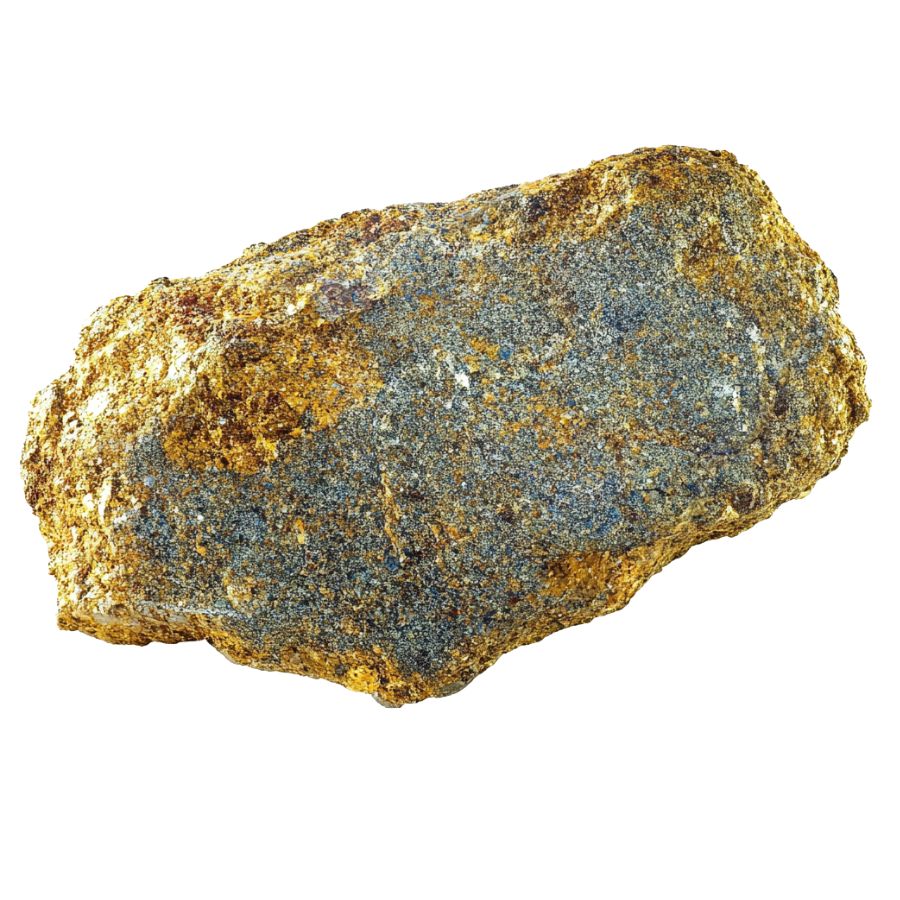
The most obvious giveaway is pyrite’s metallic, brassy-yellow color. But don’t be fooled by its gold-like appearance! Unlike real gold, pyrite has a more pale, silvery undertone.
If you tilt it under light, you’ll notice it’s less warm and rich than genuine gold. Sometimes, it might show tarnish spots with rainbow-like colors – that’s another clue you’re looking at pyrite.
Check the Crystal Structure
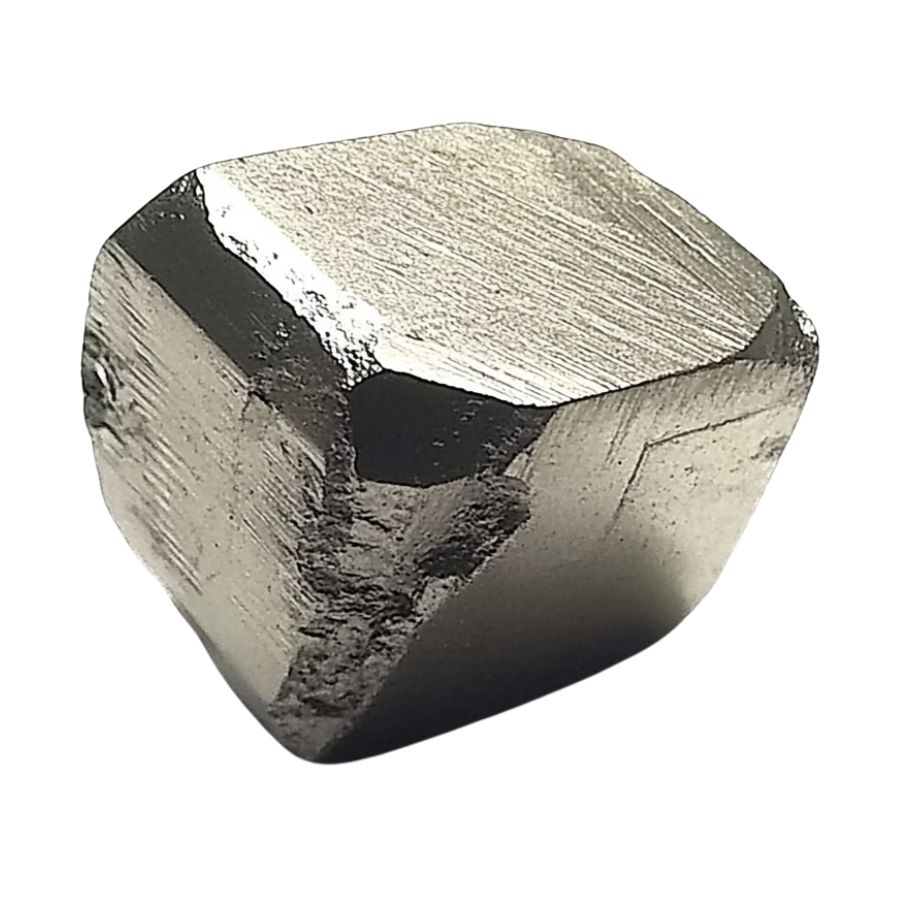
Raw pyrite typically forms in cubic or octahedral shapes – think dice-like cubes or eight-sided formations.
Even in rough chunks, you can spot these geometric patterns. Look for flat surfaces meeting at sharp angles.
Sometimes, you’ll see striations (parallel lines) on the crystal faces, which is super characteristic of pyrite. Gold never forms such crisp, angular shapes.
Test the Hardness and Brittleness

Here’s a cool trick: try scratching pyrite with a nail. Unlike soft gold, pyrite’s pretty hard (6-6.5 on Mohs scale) and will resist scratching.
It’s also brittle – if you manage to break a piece, it’ll have an uneven, jagged fracture. Gold, on the other hand, is soft and malleable, more likely to bend than break.
Examine the Surface Texture
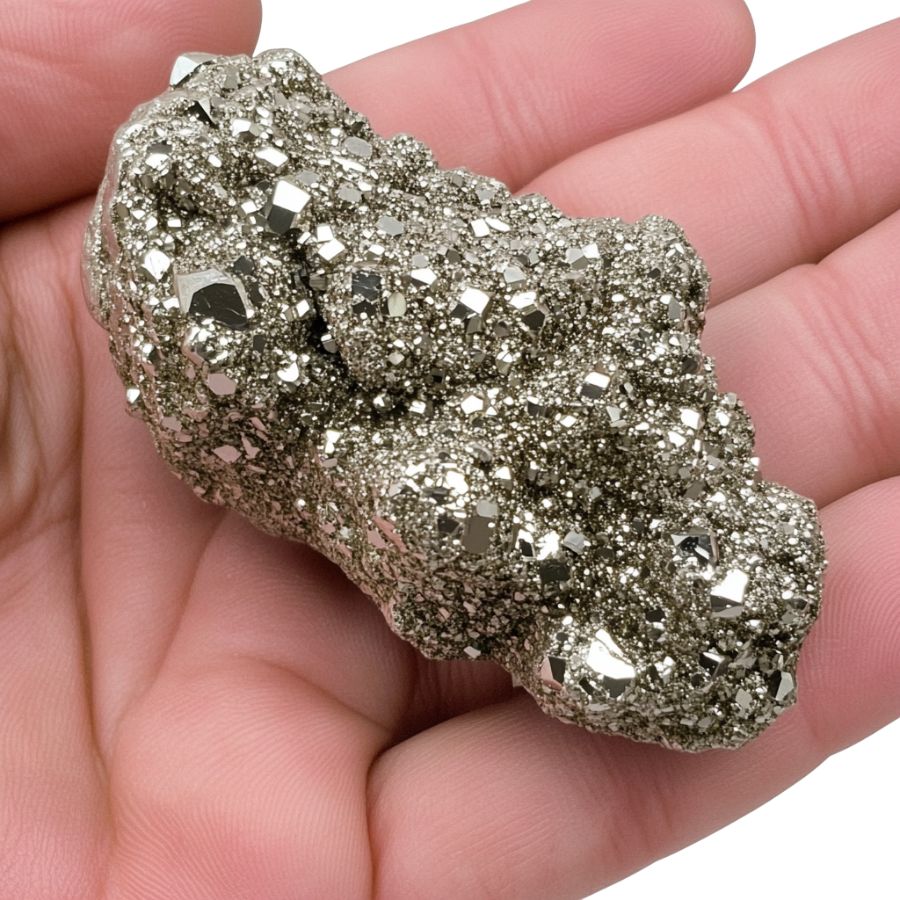
Run your fingers over rough pyrite. Feel those sharp edges and rough surfaces? That’s typical. Look for a surface that’s almost sparkly. Fresh breaks often reveal a bright, metallic luster.
Sometimes you’ll spot tiny crystal faces catching light from different angles – kind of like miniature mirrors reflecting sunlight.
A Quick Request About Collecting
Always Confirm Access and Collection Rules!
Before heading out to any of the locations on our list you need to confirm access requirements and collection rules for both public and private locations directly with the location. We haven’t personally verified every location and the access requirements and collection rules often change without notice.
Many of the locations we mention will not allow collecting but are still great places for those who love to find beautiful rocks and minerals in the wild without keeping them. We also can’t guarantee you will find anything in these locations since they are constantly changing.
Always get updated information directly from the source ahead of time to ensure responsible rockhounding. If you want even more current options it’s always a good idea to contact local rock and mineral clubs and groups
Tips on Where to Look
Pyrite is pretty common and can be found in many places. Here are some locations where you’re likely to spot these shiny golden cubes.
Sedimentary Rock Areas
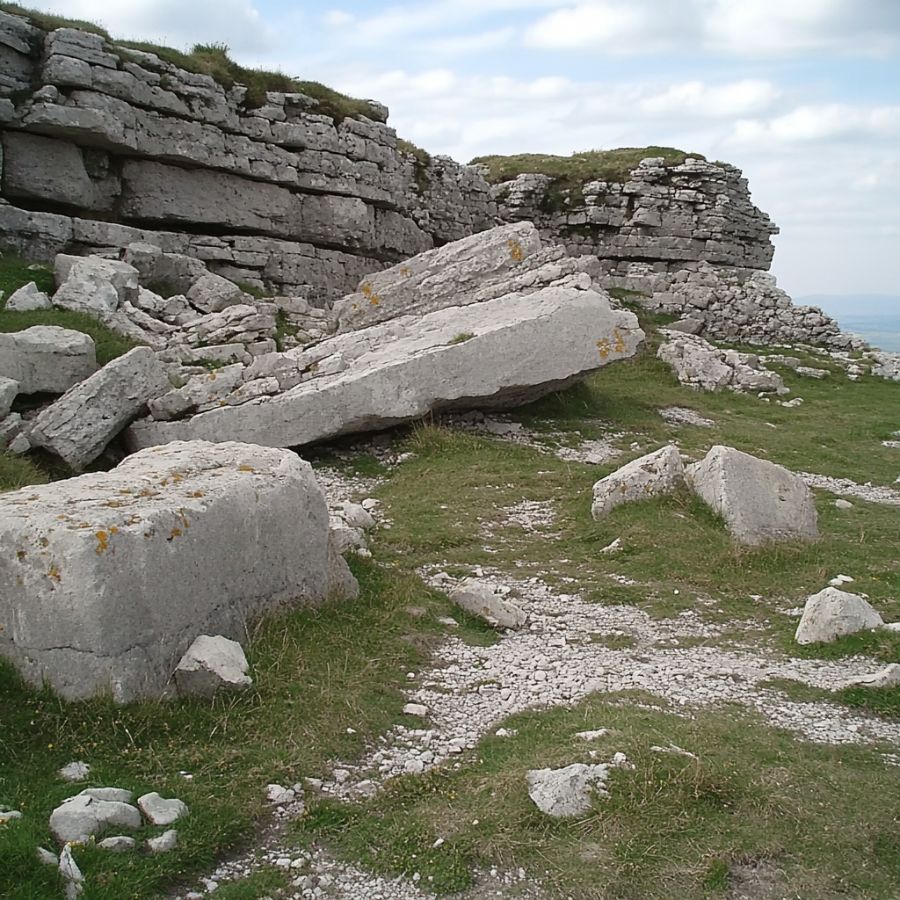
Look for dark shale or limestone outcrops. These rocks often have pyrite chunks embedded in them. Check cliff faces and road cuts where these rocks are exposed. The darker the sedimentary rock, the better your chances.
Sometimes, you’ll find perfect little cubes just sitting there in the rock matrix, waiting to be discovered after millions of years of formation in these ancient sea beds that have transformed into solid rock formations over time.
Old Mining Sites
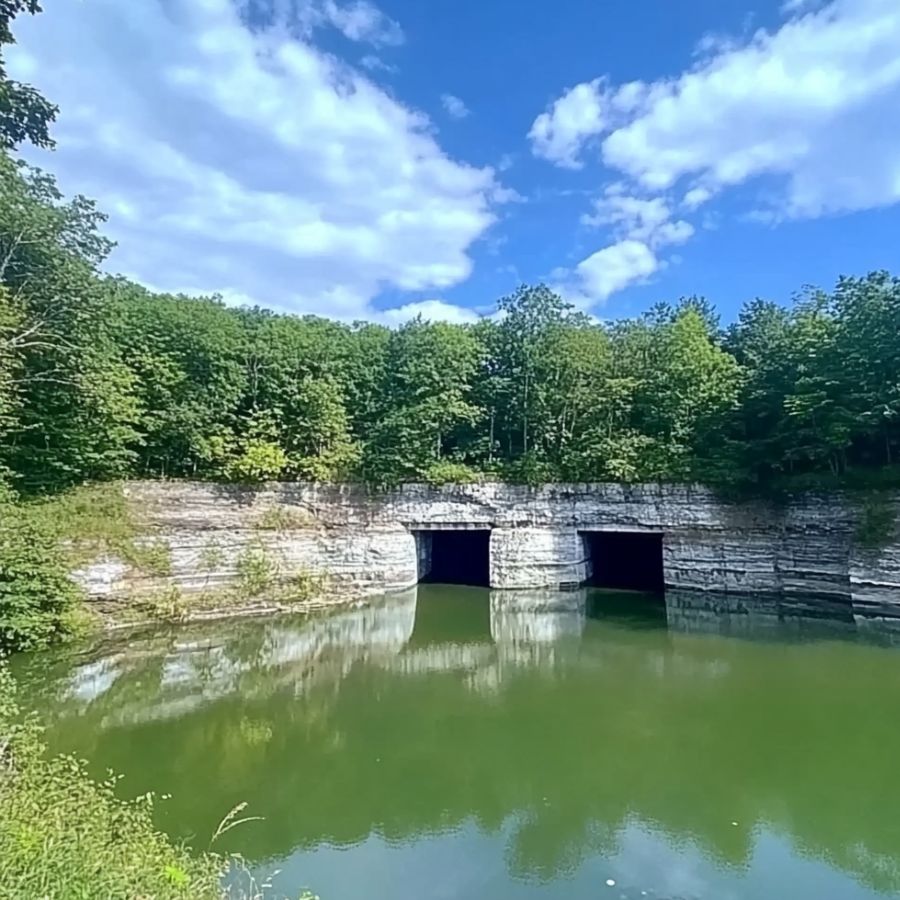
Search around abandoned quarries that are open to the public. Focus on areas where they mined coal or metal ores. Pyrite often shows up in mine dumps and tailings piles.
Look through the scattered rocks – pyrite’s metallic shine makes it easy to spot. Bring a spray bottle with water to wet rocks. Makes pyrite stand out better.
Stream Beds
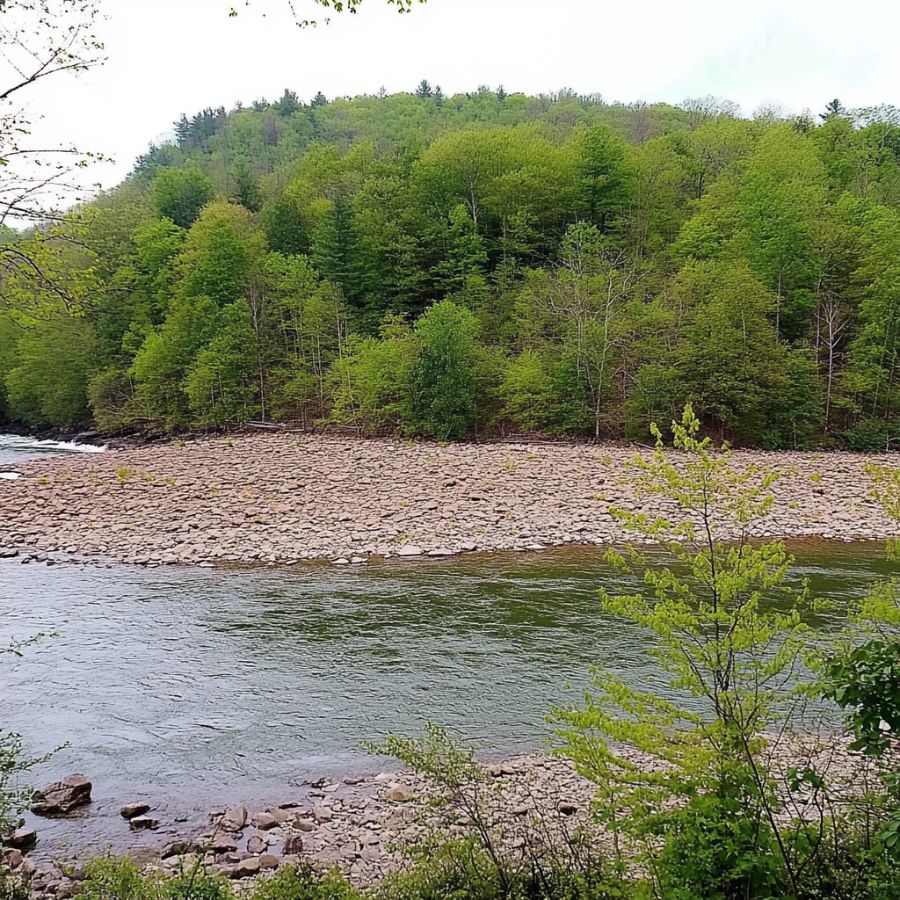
Check gravel bars in streams. Look where water slows down. Dark sand patches often contain tiny pyrite bits. Dig a few inches deep in stream gravels.
Use a gold pan – pyrite is heavy and sinks like gold. Best after rain when fresh material gets exposed.
Clay Banks
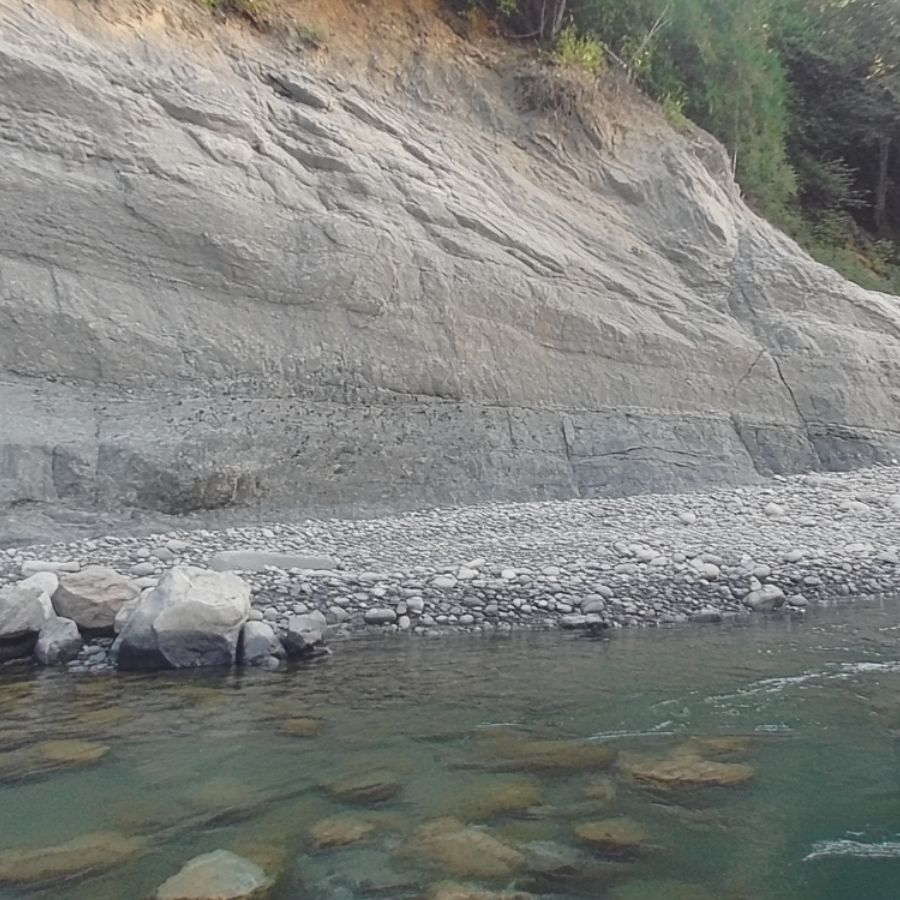
Hunt along eroded clay banks. Pyrite forms in clay deposits. Check areas where clay is gray or blue. Break open clay chunks – pyrite forms inside.
Look for rusty stains – good indicator. These spots often have pyrite crystals weathering out of the clay. Easier to spot on sunny days when crystals glitter.
Some Great Places To Start
Here are some of the better places in the state to start looking for Pyrite:
Always Confirm Access and Collection Rules!
Before heading out to any of the locations on our list you need to confirm access requirements and collection rules for both public and private locations directly with the location. We haven’t personally verified every location and the access requirements and collection rules often change without notice.
Many of the locations we mention will not allow collecting but are still great places for those who love to find beautiful rocks and minerals in the wild without keeping them. We also can’t guarantee you will find anything in these locations since they are constantly changing.
Always get updated information directly from the source ahead of time to ensure responsible rockhounding. If you want even more current options it’s always a good idea to contact local rock and mineral clubs and groups
Keystone Mine
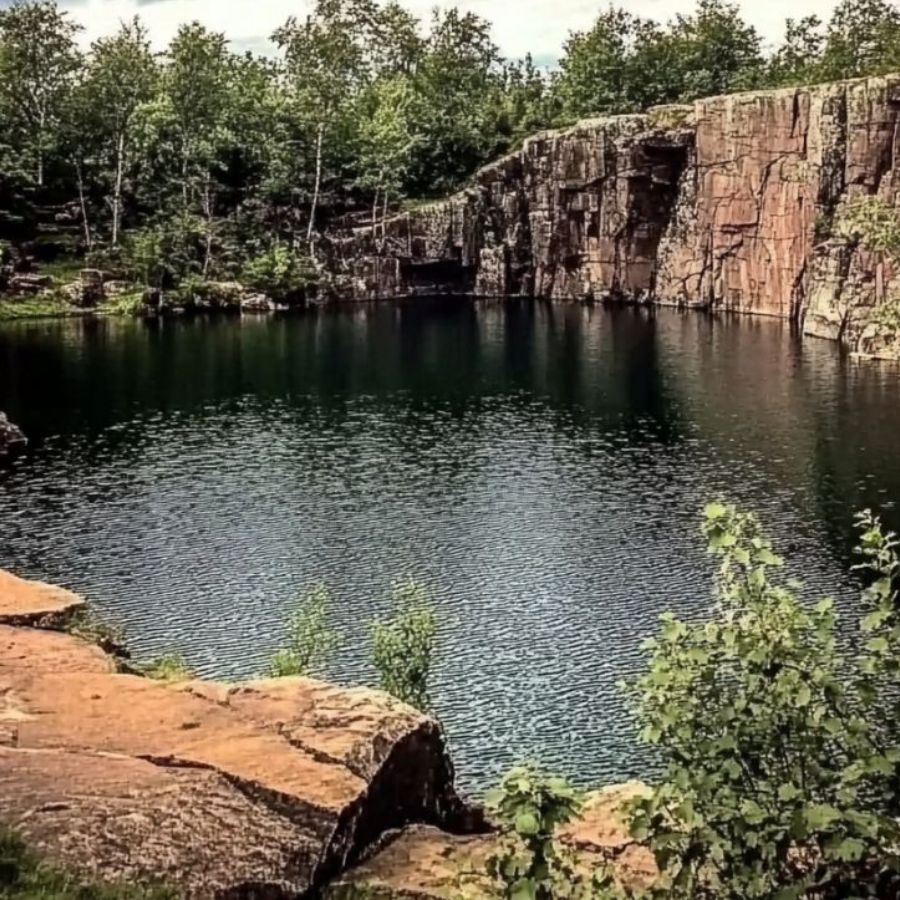
Keystone Mine is known for its rich mining history and the pyrite crystals that can be found along its mining veins. The mine was once a hub of activity, and now, it offers a fascinating glimpse into the geological past.
The area is surrounded by rugged terrain, with rock outcroppings that have been worn away by time, revealing veins of pyrite that are ready to be uncovered by eager rockhounds.
The best places to search for pyrite are along the mine’s abandoned shafts and pits. You’ll likely find them alongside quartz or other minerals. If you’re lucky, you might also spot other minerals like sphalerite or galena.
Ohio River
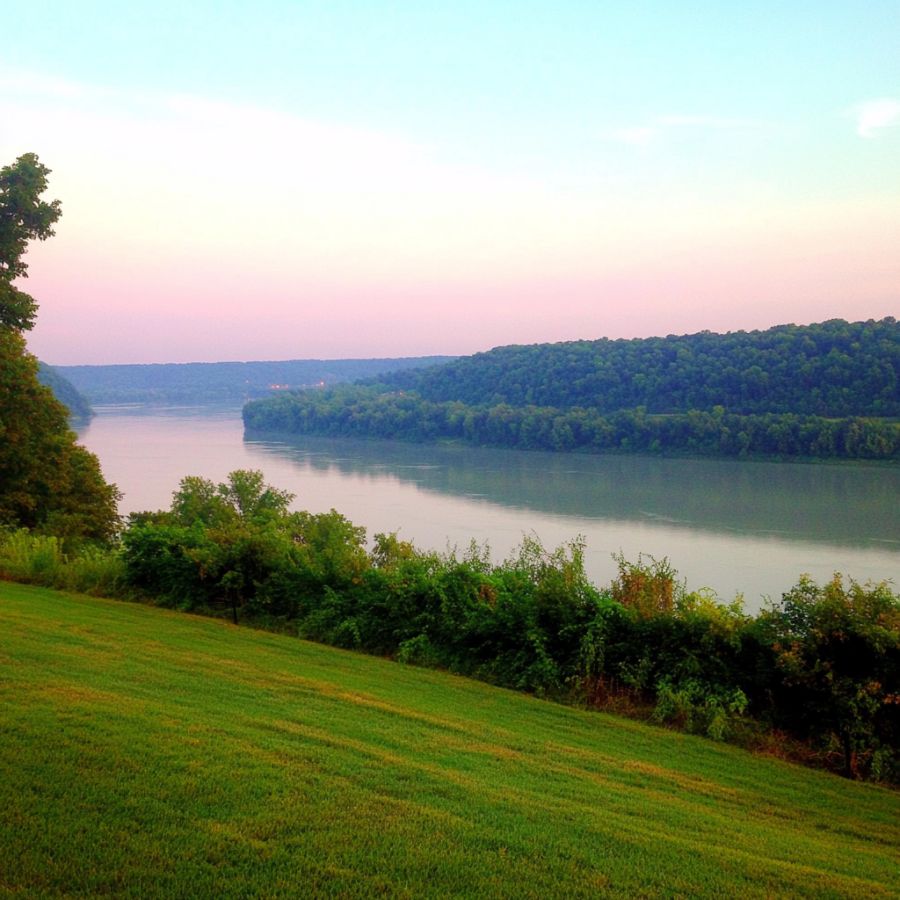
The banks of the Ohio River, particularly in Allegheny County, have been an important location for collecting various minerals, including pyrite. The pyrite found here is often associated with shale and sandstone layers, with the shiny cubes standing out against the duller rock surfaces.
The best time to hunt for pyrite along the Ohio River is during low water levels, which expose more of the riverbed. Keep an eye out for pyrite along the riverbanks, especially near rocky outcrops and creek mouths where the mineral may be concentrated.
Many rockhounds also report finding pyrite mixed with other metals like copper or lead.
Fort Littleton
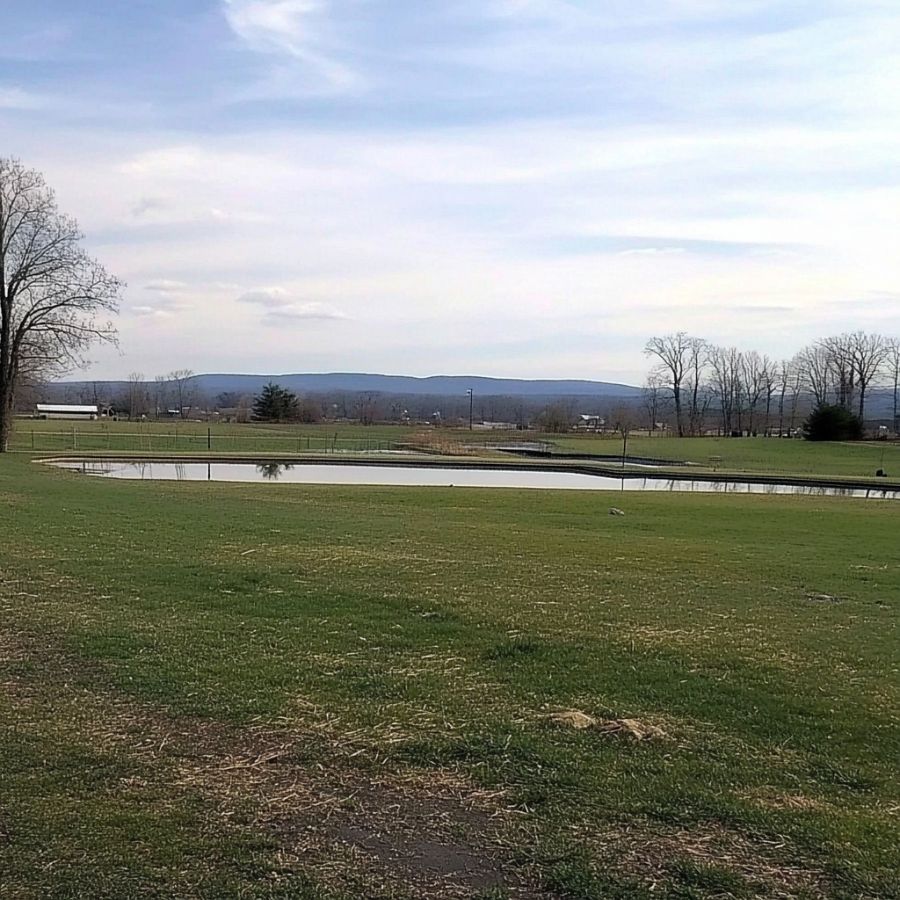
Fort Littleton, a quaint spot in Fulton County, is not just a place for history buffs; it also offers rockhounds the chance to discover pyrite and other unique minerals. The area is known for its old mining activity, particularly around the historic fort’s surroundings.
The region’s geology consists of shale and limestone deposits, where pyrite often forms in small, shiny cubic crystals. These crystals can be found near exposed rock surfaces and along small creek beds in the area.
One of the best places to search is along the roadcuts where natural erosion has exposed mineral veins. As you search for pyrite, you might also come across other exciting finds like quartz or calcite.
Brookdale Mine
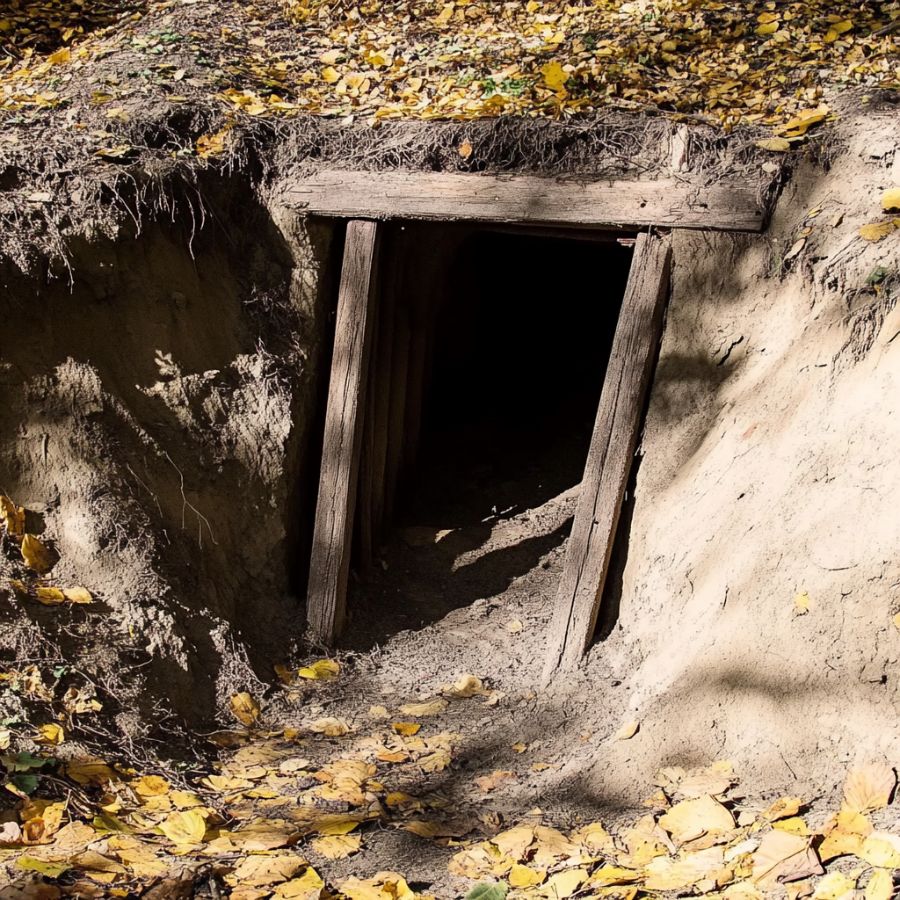
Brookdale Mine is located in Chester County, Pennsylvania. This area is famous for the rich deposits of iron and other metals that were once mined here. Today, the mine provides a great opportunity for rockhounds to find pyrite, often in the form of distinct, metallic-looking cubes.
The pyrite here is typically found within quartz veins, and you’ll want to focus your search around old mine shafts or along the surface where rock debris has weathered away.
If you plan to explore, be mindful of the terrain, as it can be rocky and uneven. With patience and the right tools, you’ll increase your chances of finding this dazzling mineral among the remnants of the old mine.
Monongahela River
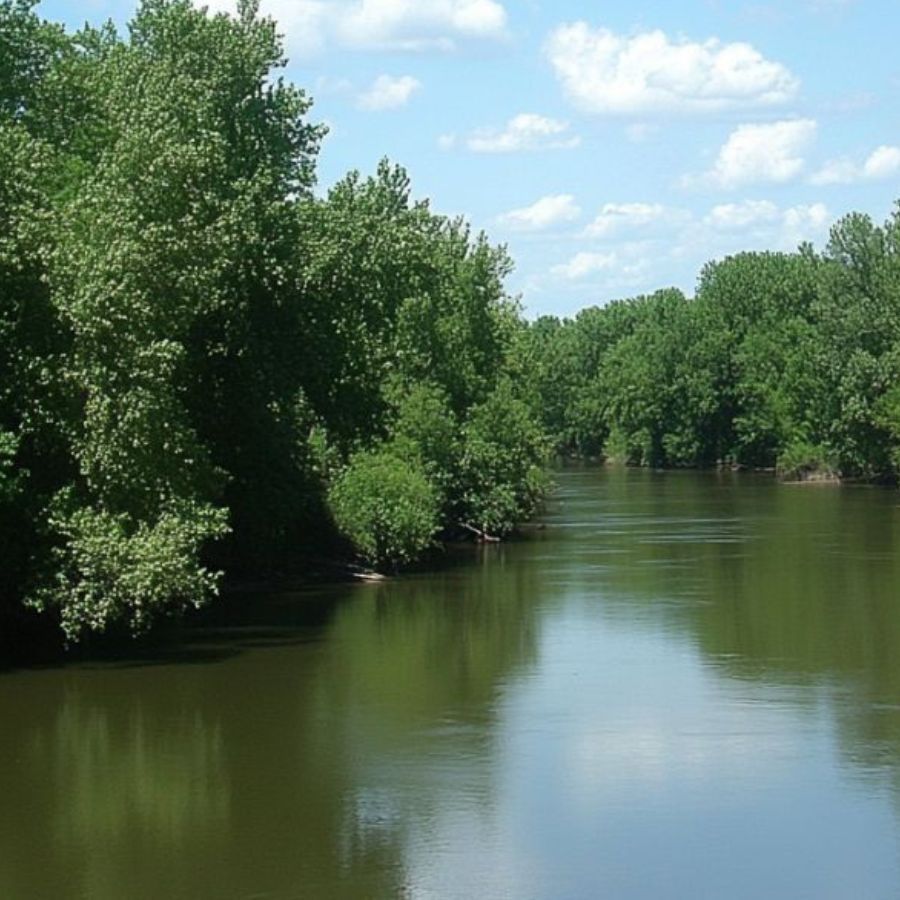
The Monongahela River in Fayette County offers a unique location for pyrite hunters. Alluvial deposits found along the river’s banks are a prime spot to uncover pyrite, especially after heavy rainfall or during low water conditions.
The river’s shifting currents constantly expose new layers of sediment, so you’ll get fresh opportunities to discover this shiny golden mineral.
Pyrite here is often mixed with sandstone and other river rocks. The river’s geological history, shaped by erosion and sedimentation, has led to the concentration of pyrite and other minerals in certain spots along the riverbanks.
Places Pyrite has been found by County
After discussing our top picks, we wanted to discuss the other places on our list. Below is a list of the additional locations along with a breakdown of each place by county.
| County | Location |
| Adams | Teeter Quarry |
| Adams | Wenksville |
| Berks | Dyer Quarry |
| Berks | Jones Mine |
| Berks | Olafsen Iron Mine |
| Bucks | Edison Crushed Stone Quarry |
| Bucks | Doan’s Lead Mine |
| Bucks | Eureka Stone Quarry |
| Carbon | Tresckow |
| Carbon | William G. Freyman Mine |
| Carbon | Hazard Mine |
| Centre | Shad Prospect |
| Centre | Interstate 99 Skytop Roadcut |
| Chester | Henry Pusey’s Quarry |
| Chester | Phoenixville Mining District |
| Chester | French Creek Mines |
| Chester | Bailey’s Quarry |
| Dauphin | Hummelstown |
| Delaware | Aston Township |
| Delaware | Deshong’s Quarry |
| Fayette | Gates-Adah Kimberlite Dikes |
| Huntingdon | Motel 22 Occurrence |
| Huntingdon | New Enterprise Stone & Lime Quarry |
| Juniata | Susquehanna Quarry |
| Lancaster | Gap Mine |
| Lancaster | Martin Limestone Quarry |
| Lancaster | Peach Bottom |
| Lebanon | Cornwall Mines |
| Lebanon | Pennsy Supply Quarry |
| Lehigh | Constitution Drive |
| Lehigh | Friedensville Mine |
| Lehigh | Ueberroth Mine |
| Lycoming | Keystone Paint and Filler Co. Quarry |
| Lycoming | Lime Bluff Quarry |
| Monroe | Bossardsville Quarry |
| Montgomery | Brendlinger Mine |
| Montgomery | Ecton Mine |
| Montgomery | Kibblehouse Quarry |
| Montgomery | Gwynedd Tunnel |
| Northampton | Chestnut Hill |
| Northampton | Sherrer Quarry |
| Lycoming | Tivoli Adit |


